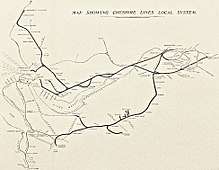Cheshire Lines Committee

| Cheshire Lines Committee | ||||||||||||||||||||||||||||||||||||||||||||||||||||||||||||||||||||||||||||||||||||||||||||||||||||||||||||||||||||||||||||||||||||||||||||||||||||||||||||||||||||||||||||||||||||||||||||||||||||||||||||||||||||||||||||||||||||||||||||||||||||||||||||||||||||||||||||||||||||||||||||||||||||||||||||||||||||||||||||||||||||||||||||||||||||||||||||||||||||||||||||||||||||||||||||||||||||||||||||||||||
|---|---|---|---|---|---|---|---|---|---|---|---|---|---|---|---|---|---|---|---|---|---|---|---|---|---|---|---|---|---|---|---|---|---|---|---|---|---|---|---|---|---|---|---|---|---|---|---|---|---|---|---|---|---|---|---|---|---|---|---|---|---|---|---|---|---|---|---|---|---|---|---|---|---|---|---|---|---|---|---|---|---|---|---|---|---|---|---|---|---|---|---|---|---|---|---|---|---|---|---|---|---|---|---|---|---|---|---|---|---|---|---|---|---|---|---|---|---|---|---|---|---|---|---|---|---|---|---|---|---|---|---|---|---|---|---|---|---|---|---|---|---|---|---|---|---|---|---|---|---|---|---|---|---|---|---|---|---|---|---|---|---|---|---|---|---|---|---|---|---|---|---|---|---|---|---|---|---|---|---|---|---|---|---|---|---|---|---|---|---|---|---|---|---|---|---|---|---|---|---|---|---|---|---|---|---|---|---|---|---|---|---|---|---|---|---|---|---|---|---|---|---|---|---|---|---|---|---|---|---|---|---|---|---|---|---|---|---|---|---|---|---|---|---|---|---|---|---|---|---|---|---|---|---|---|---|---|---|---|---|---|---|---|---|---|---|---|---|---|---|---|---|---|---|---|---|---|---|---|---|---|---|---|---|---|---|---|---|---|---|---|---|---|---|---|---|---|---|---|---|---|---|---|---|---|---|---|---|---|---|---|---|---|---|---|---|---|---|---|---|---|---|---|---|---|---|---|---|---|---|---|---|---|---|---|---|---|---|---|---|---|---|---|---|---|---|---|---|---|---|---|---|---|---|---|---|---|---|---|---|---|---|---|---|---|---|---|---|---|---|---|---|---|---|---|---|---|---|---|---|---|---|---|---|---|---|---|---|---|---|---|---|---|---|---|---|---|---|---|---|---|---|---|
| ||||||||||||||||||||||||||||||||||||||||||||||||||||||||||||||||||||||||||||||||||||||||||||||||||||||||||||||||||||||||||||||||||||||||||||||||||||||||||||||||||||||||||||||||||||||||||||||||||||||||||||||||||||||||||||||||||||||||||||||||||||||||||||||||||||||||||||||||||||||||||||||||||||||||||||||||||||||||||||||||||||||||||||||||||||||||||||||||||||||||||||||||||||||||||||||||||||||||||||||||||
The Cheshire Lines Committee (CLC) was the second-largest joint railway in Great Britain, with 143 route miles.[1] Despite its name, approximately 55% of its system was in Lancashire.[note 1] In its publicity material it was often styled the Cheshire Lines Railway. It served Birkenhead, Chester, Knutsford, Liverpool, Manchester, Northwich, Southport, Stockport, Warrington, Widnes and Winsford.
Formation
The CLC (originally named the Great Northern and Manchester, Sheffield and Lincolnshire Joint Committee)[2] was formed by the Great Northern Railway (GNR) and the Manchester, Sheffield and Lincolnshire Railway (MS&LR) in 1862 to regulate traffic on four proposed lines in Cheshire (listed below and built between 1860 and 1866),[2] formalised by the Great Northern (Cheshire Lines) Act 1863, and the Midland Railway (MR) became an equal partner under the Cheshire Lines Transfer Act 1865. Under the Cheshire Lines Act 1867 the CLC became an independent organisation, although its management consisted of three directors of the three companies. Its purpose was to control lines in Lancashire and Cheshire, an area dominated by the LNWR. In its early years, the driving force behind the expansion of the railway was Sir Edward Watkin.
It was granted powers to build a line 34 miles (55 km) long, opened in 1873, from a temporary station in Manchester to Liverpool. The section from near Cressington to Liverpool was along the Garston and Liverpool Railway, which had been absorbed on 5 July 1865. From 1874 the CLC was headquartered at Liverpool Central station.
By the late 1870s most CLC services radiated from Manchester and it became desirable to bring them into a single station – the MR and the MS&LR were sharing London Road (now Piccadilly) with the LNWR. Accordingly, Manchester Central was built in 1880, and the MR moved its trains to the new station on its completion.

Grouping and nationalisation
In 1923 the MR, along with the LNWR, was grouped into the London, Midland and Scottish Railway, while the GNR and MS&LR (by then the Great Central Railway) became part of the London and North Eastern Railway. The line continued to be joint, with a 1/3 share to the LMS and a 2/3 share to the LNER. On nationalisation in 1948 both companies became part of British Railways, and shortly afterwards the CLC lines came under the control of the London Midland Region.
The CLC today
The CLC routes between Liverpool and Manchester and between Manchester and Chester via Northwich survive. Several CLC stations remain in their original form, such as Widnes, Warrington Central and Urmston. Liverpool Central has been demolished: local services on the former CLC line, operated by Merseyrail, run through an underground station at the same site, and main line services run to and from Liverpool Lime Street. Manchester Central is now the Manchester Central Conference Centre. The loop line via Widnes Central, which was operated (although not owned) by the CLC closed in 1964.
Lines
Created from:
- Stockport and Woodley Junction Railway[3]
- Cheshire Midland Railway
- Stockport, Timperley and Altrincham Junction Railway[4]
- West Cheshire Railway[5]
Absorbed:
Built:
Notes
- ↑ By calculation from M.R. system maps, sheets 16-19A
References
- ↑ Casserley, p.68
- 1 2 "Illustrated Interviews - No.23. - Mr. David Meldrum - Manager, Cheshire Lines". Railway Magazine. May 1899. Retrieved 2017-07-24.
- ↑ "Stockport and Woodley Junction Railway Company". The National Archives. Retrieved 28 November 2015.
- ↑ "Stockport, Timperley and Altrincham Junction Railway Company". The National Archives. Retrieved 28 November 2015.
- ↑ "West Cheshire Railway Company". The National Archives. Retrieved 28 November 2015.
Bibliography
- Casserley, H.C. (April 1968). "Cheshire Lines Committee". Britain's Joint Lines. Shepperton: Ian Allan. pp. 68–80. ISBN 0-7110-0024-7.
- Holt, G.O., A Regional History of the Railways of Great Britain, Volume X: The North West, David & Charles, 1978. ISBN 0-946537-34-8
- Radford, B., Midland Though The Peak Unicorn Books, 1988.
- Dyckhoff, Nigel. Portrait of the Cheshire Lines Committee, Ian Allan, Shepperton, 1999. ISBN 0-7110-2521-5
- Midland Railway System Maps (The Distance Diagrams). Volume 2 Leeds to Leicester and branches; Derby to Manchester and branches; Cheshire Lines (1909–1923 ed.). Teignmouth: Peter Kay. ISBN 1-899890-17-3.